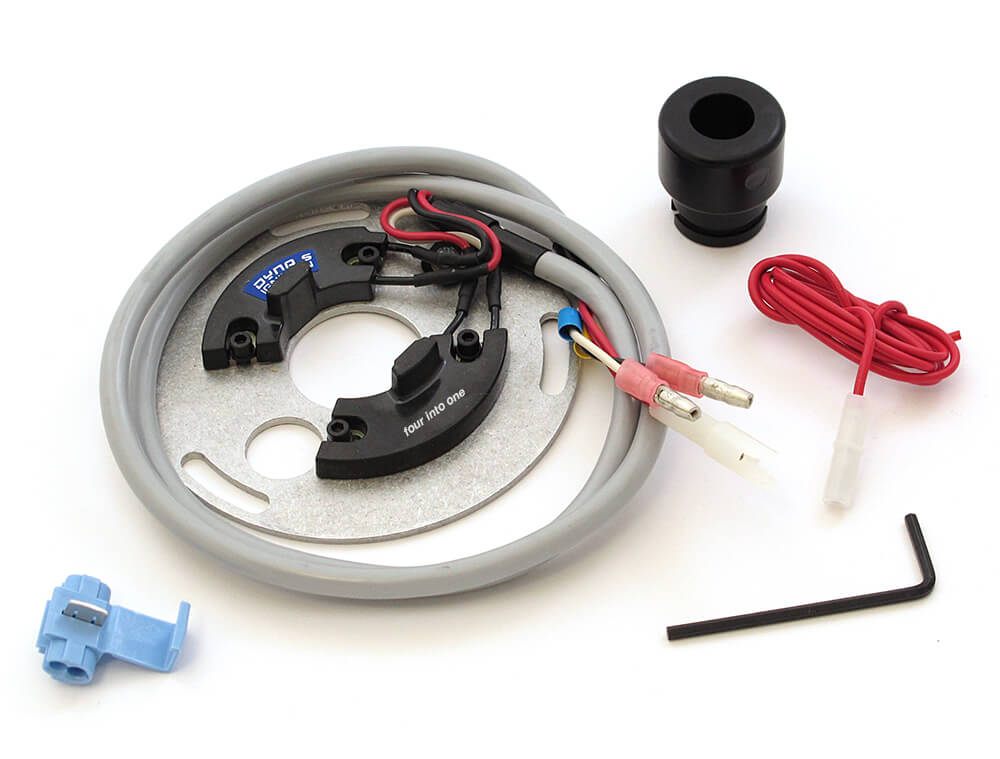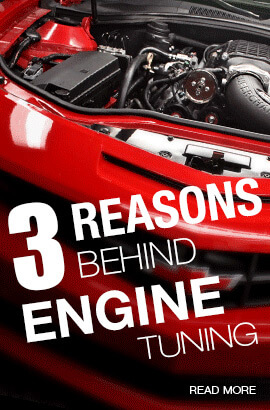The ignition system is one of the most overlooked car accessories when it comes to engine and car tuning. Most people think that once their car modifications are done, all they need to do is get the ignition timing right and turn the ignition. But it's much more complicated than that. For one, the spark must be strong enough to ignite the air/fuel mixture. That might sound obvious, but what's not so obvious is that air molecules act as an insulator, and when you modify your car to get more air into the engine, the spark from the stock ignition system might be too weak to effectively ignite the air/fuel mixture, particularly if you're using a forced induction system. In fact poor spark quality can have as negative an effect on engine power as poor ignition timing. In addition, an air/fuel ratio of 11 parts air to 1 part fuel, which is a fuel rich mixture, is most conducive to spark ignition. However, the air/fuel ratio for the proper burning of the fuel is 14,7 parts air to 1 part fuel. Thus, the air/fuel mixture is not ideal for a spark ignition system, particularly during cold start conditions where fuel vaporization is not as effective.

Once the air/fuel mixture is ignited, the rate at which the flame passes through the combustion chamber becomes important if you want to unleash the maximum power from your engine. If the flame travels too fast, it would place too much load on the pistons, conrods and bearings; if the flame travels too slowly, not enough force would be generated to create maximum power at the rims available. Points type and transistor high-energy ignition (HEI) ignition systems are both inductive storage-type ignition systems. Points type ignition systems relay on contact breaker points for spark timing and distribution while transistor HEI ignition systems use magnetic pulses and electronic circuitry instead of contact breaker points. For this reason, transistor HEI ignition systems are often referred to as electronic ignition systems. Both points type and transistor HEI ignition systems use timing advance mechanisms.
The contact breaker points and the distributor cam in points type ignition systems provide the switching trigger for the primary, low tension circuit. When the points are closed, the current from the primary windings in the coil flow through the points and is earthed. This causes a magnetic field to be formed around the coil's secondary windings. When the points open, the current can no longer flow to earth and the magnetic field around the coil's secondary windings collapses. This causes a high voltage current of 30,000 to 40,000 volts to be induced in the coil's secondary windings. This voltage is strong enough to jump the spark plug gap and is directed to the appropriate spark plug via the rotor in the distributor.
This system works well is stock engines but are not optimal for modified and tuned engines as at higher RPM there is less time for the current to fully saturate the coil and form the magnetic field around the coil's secondary windings. Generally, the points type ignition system is good for up to 18,000 quality sparks per minute. This is sufficient for engine speeds of up to 9,000 RPM on a 4-cylinder engine; 6,000 RPM on a 6-cylinder engine; and 4,500 RPM on a V8 engine.

Electronic advance control greatly improve ignition advance as it eliminates the need for bob weights and rotating plates. In fact, electronic engine management completely eliminates the need for a distributor and, with it, the distributor cap! The distributor cap is a major problem on high revving race cars when you increase the spark plug gap and the secondary ignition voltage. With higher voltages and bigger spark plug gaps, flash over, or cross firing, is more likely, especially between adjacent terminal posts in the distributor cap. And the terminals posts in the distributor are even close together when your engine has eight or more cylinders.
When you eliminate the distributor, you need another system to generate a signal for the engine control unit (ECU) to know when each piston reaches top dead center (TDC). This can be accomplished by taking a signal from a pulse generator attached to either the front pulley on the crankshaft, or the circumference of the flywheel. The ECU can then use this signal to determine the correct ignition timing and advance firing angle for each cylinder, and can switch the low voltage primary circuit on and off at the correct moment. The important thing on a distributorless ignition system is to ensure that the pulse trigger is correctly mounted. This actually entails three things you need to check: the firing pin diameter, the firing pin position, and the air gap.



